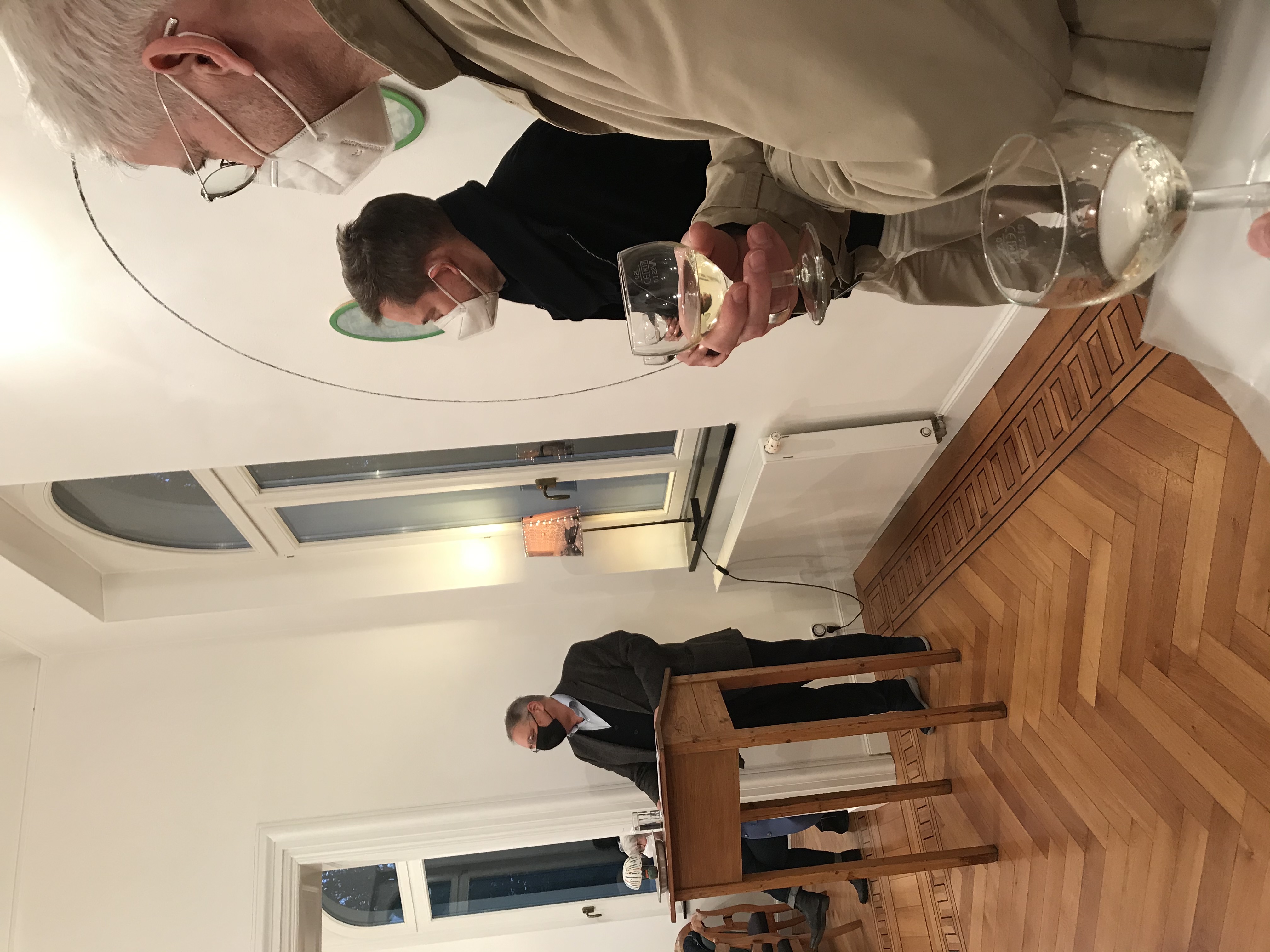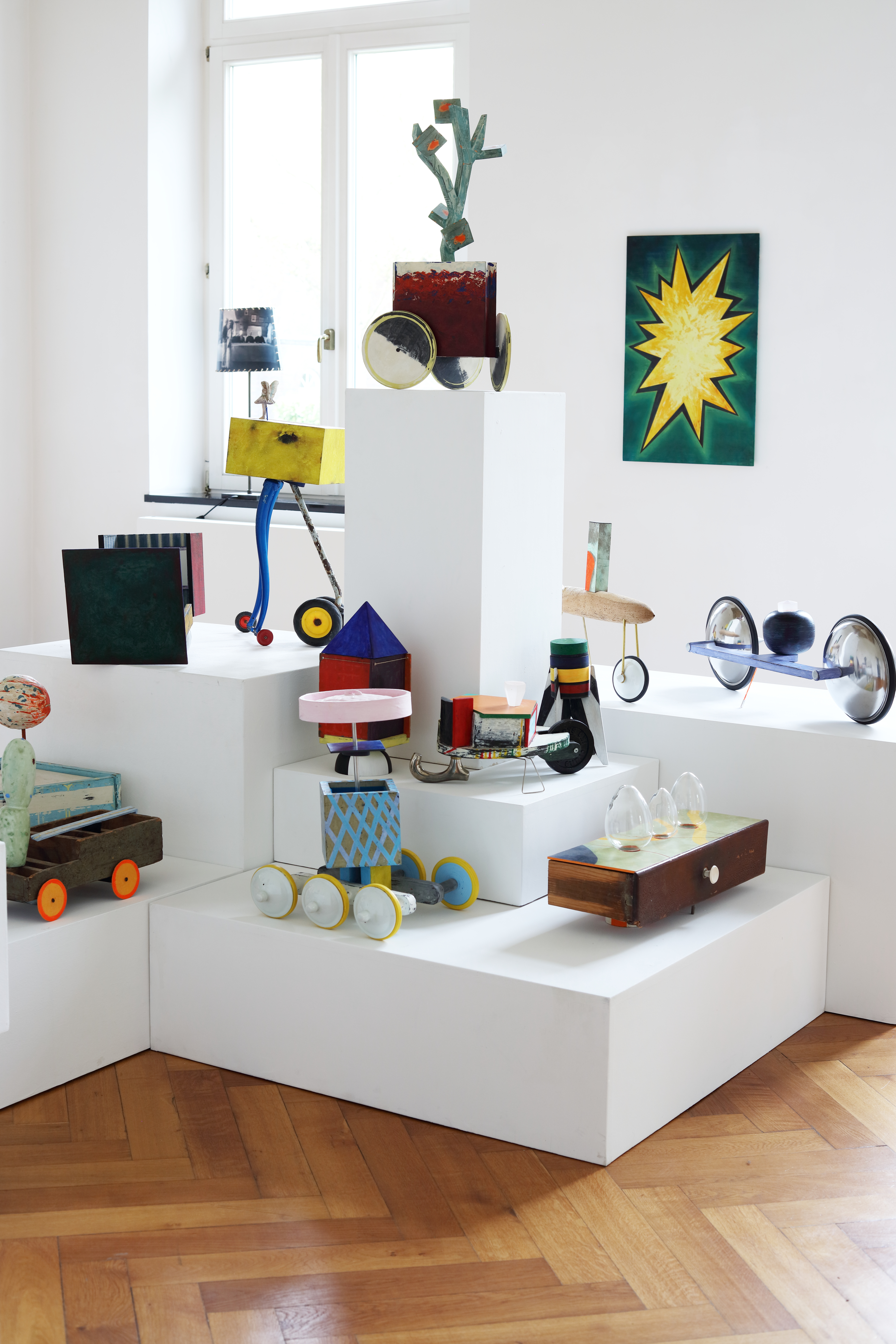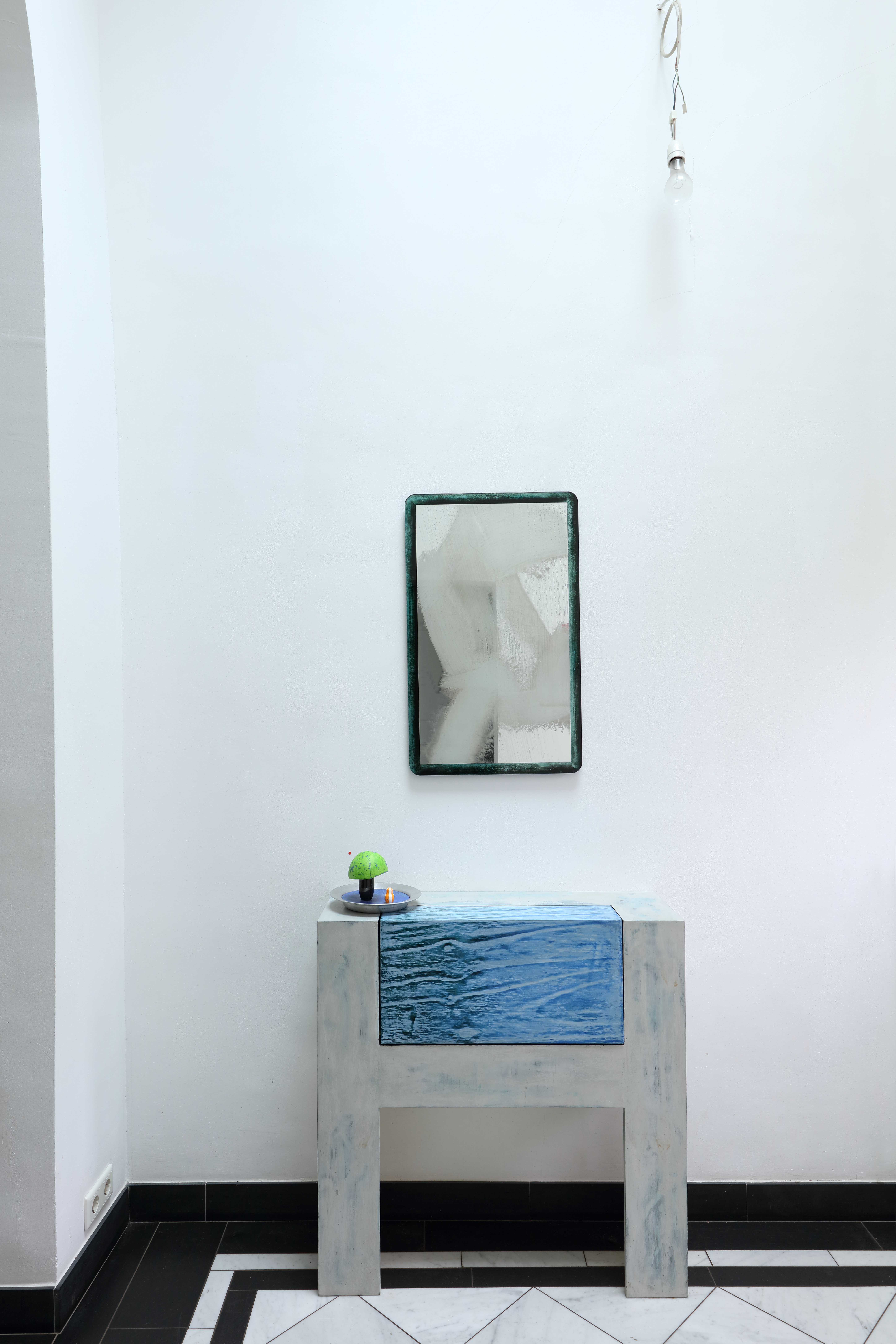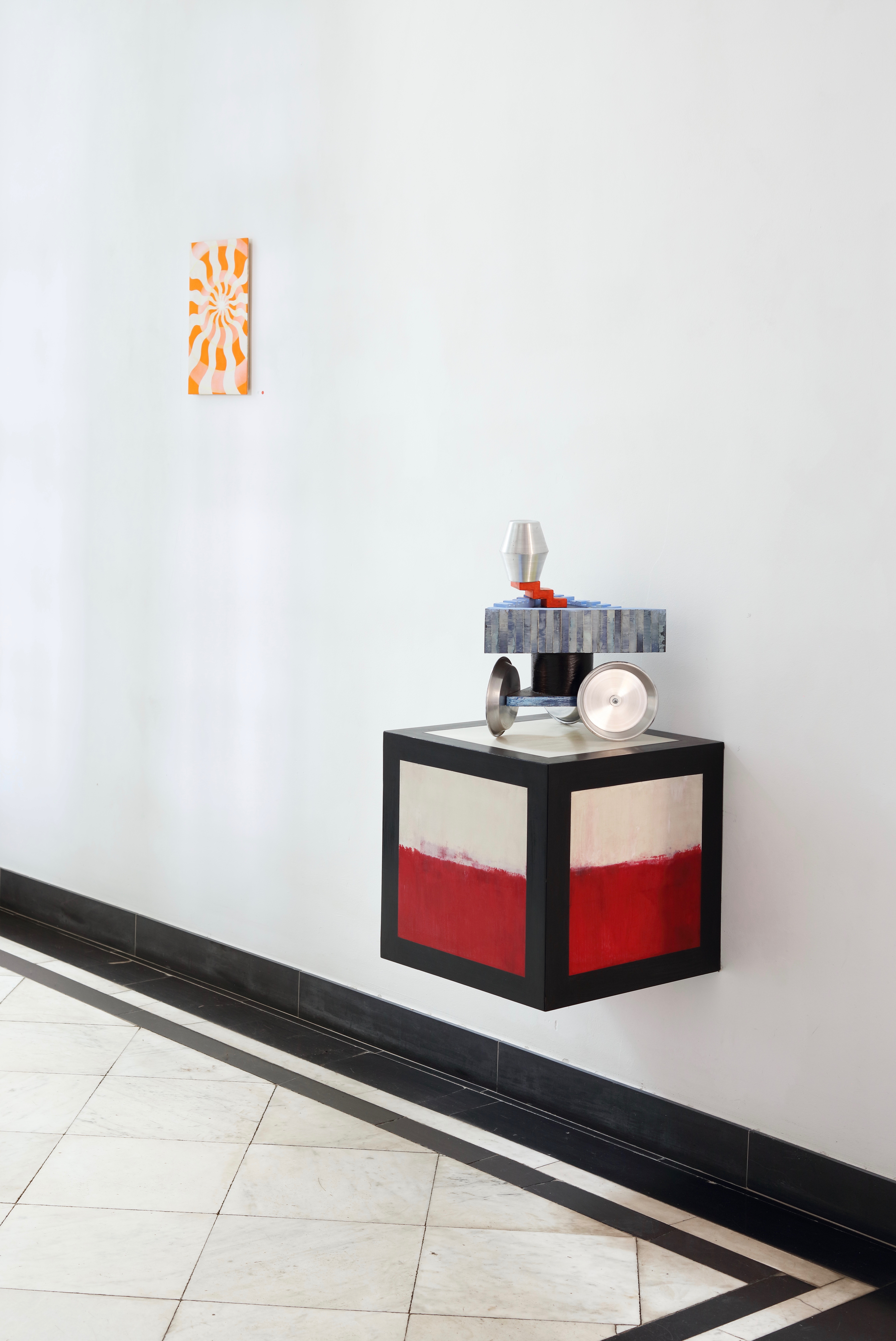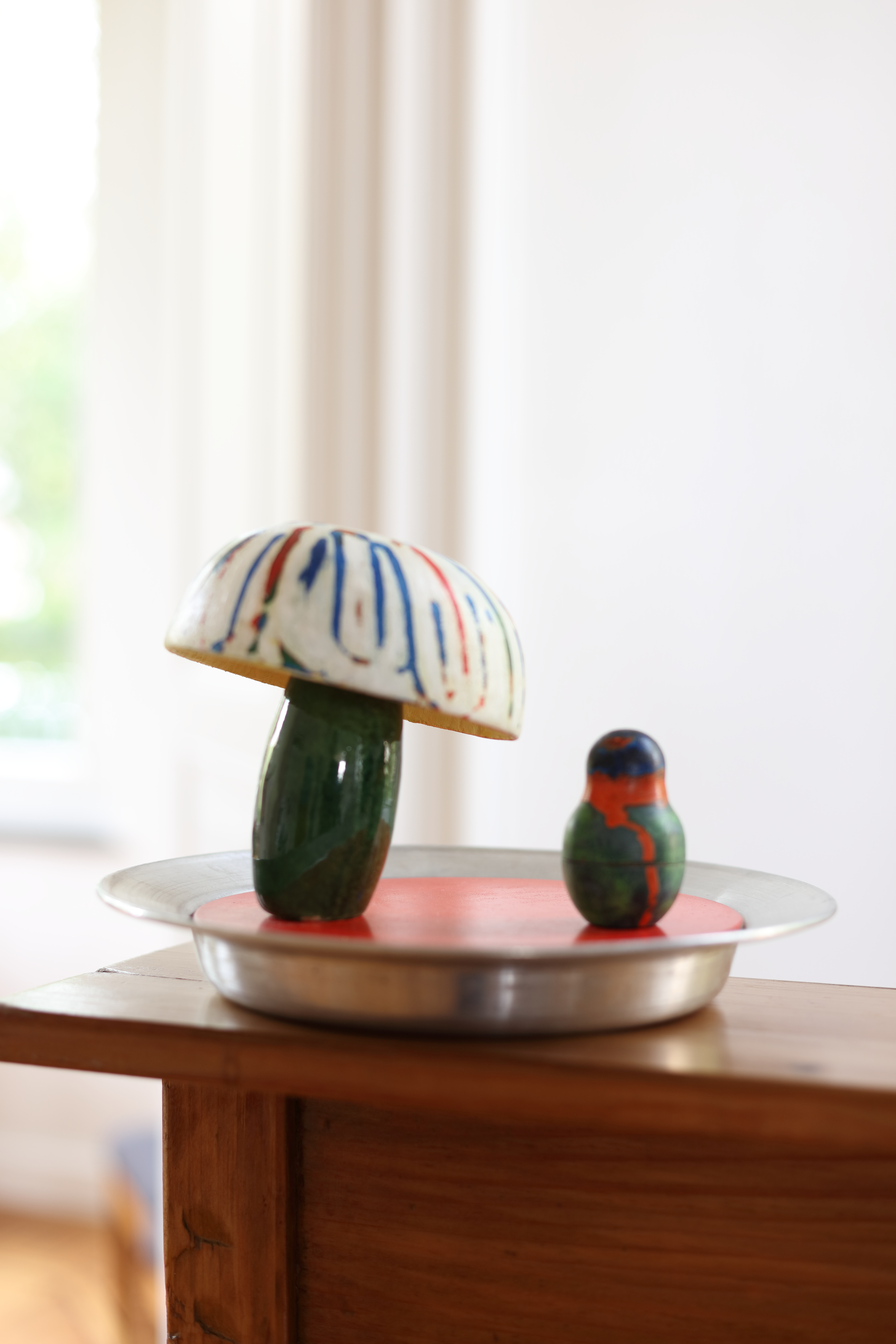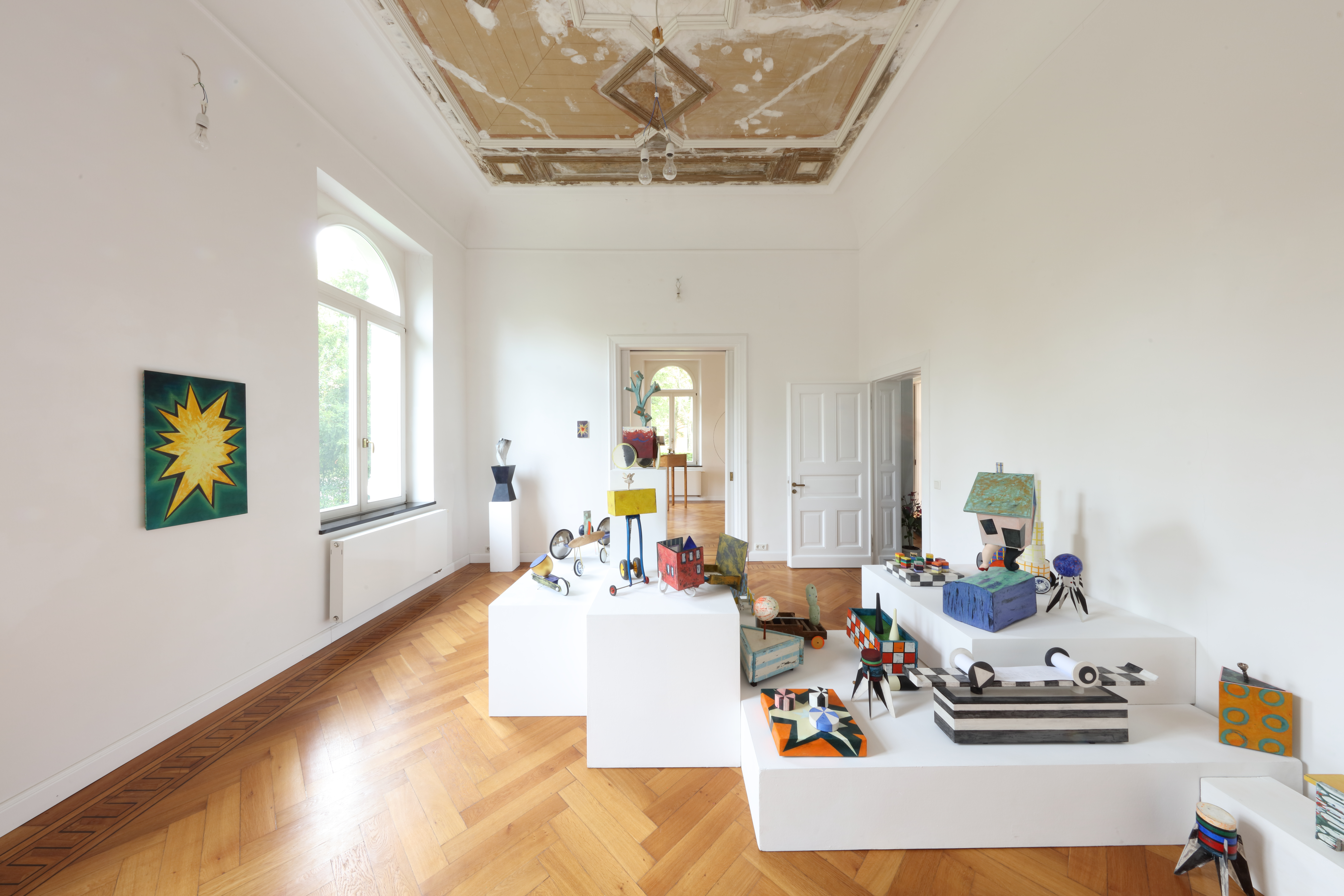Wolpertinger Show
March- May, 2022
Villa Goecke
Krefeld
As a painter, Michael Growe has developed his own visual language with a special, unmistakable painting technique. In addition to paintings, wooden objects are also made, which Growe paints and whose functions as usable spaces are concealed , those he calls “Trojans“. Since 2004, Michael Growe has been creating a constantly growing series of containers, small sculptures and spatial collages, the “Wolpertinger” shown here for the first time. They are assemblages of found objects and fragments of discarded, destroyed works. The materials used are not subject to random selection,, but are biographically charged time capsules, which the artist processes in a sometimes ironic combination. They are quasi aphorisms made from shards with sometimes crypto-biographical semiotics. This exhibition includes a catalog raisonné of all Wolpertinger works created by Michael Growe to date.
– Ralph Kleinsimlinghaus
For example the Wolpertinger, who pose on a kind of monkey rock made of pedestals, but can also be found in other locations within the villa.
(…)
In this exhibition, Growe again combines the pieces from different groups of his works, creating exciting configurations and interactions. Three paintings for instance are combined into one overarching emblematic figure, which we encounter in allusion to an emoji with eyes wide open and mouth agape in fright.
These paintings illustrate Growe’s characteristic treatment of the surface of the painting carrier, which is created by repeated application and sanding of the paint. From the alternately nuanced color values, the pictorial space opens up. This elaborate process creates streaks, scratches, and irregular shadings, whereby an illusionistic depth space does open up and thus allow the viewer to escape into the fictitious pictorial space, the immersion in another reality. At the same time, however, in view of the diffuse surface – like a matt blind mirror – one is thrown back on oneself and on the immediately real spatial conditions of color and wooden chassis, the interplay of two- and three-dimensionality.
In the “Wolpertingers” the concrete, incorporated objects are carriers of traces, memories, impressions, of particular fields of interest. They condense into an individual mythology. The legendary exhibition organizer Harald Szeemann once said that “the unrestricted implementation of artistic-creative forces “leads to a pleasant relativization of the concept of art… because it reintroduces the concept of the weirdo and the thinker.” The signs, signals, and symbols that these “weirdos and thinkers” make “and the intensity with which they fill them yield for us the density of the world they mean.” He emphasizes, “without obsession there is no Individual Mythology.” Thus, the Wolpertingers also refer indirectly or directly to literature, art history, natural science, pop culture, but precisely also to the artist’s vita. Symbolically condensed, the multiple recombinations and the references they contain result in a kind of “cryptobiography“
The individual components are filled with personal stories and anecdotes, but not on a superficially visible level. Thus, Growe provides information directly and one learns that the bicycle fork comes from the racing bike with which the son catapulted himself into the hospital in a traffic accident or that a baby carriage wheel was washed up from the Rhine. Or that the numerous porcelain lids were bought on daily trips to the hospital in Shanghai. It is not the exquisite, but rather the everyday things that have been collected and accumulated that sometimes harbor sorrowful values of experience and memory.
(…)
Spiritual, emotionally charged content is also incorporated, as well as material from youthful dreams and adventure worlds has been integrated. Impressions of China; fictional sci-fi visions, historical research expeditions and his own travels combine and transform. Michael Growe’s artistic cosmos encompasses litterature and caricature, moon voyage and coffee voyage.
The titles, often peppered with wordplay, are accent and counterpoint. They hint at “cryptobiographical” as well as inner images, whose realization Growe, however, sometimes more, sometimes less playfully bypasses and demands a second, even a third look. Sometimes they comment humorously on their own clitterings.
My Dreams of Perfection Were Shattered by a Catwalking Mouse” is based on anecdotal evidence. What is meant is the supposedly successful expulsion of mice from his own apartment, although this dream was abruptly shattered by a mouse walking by as if on a catwalk.
The metaphorical and the mythological meet in “Bixi”. Growe’s object of the same name with its red corpus towering in the manner of a monument presents itself as a reduced reminiscence of this traditional Chinese form.
This reduction also affects the series of paintings with symbolic zig-zag formations that illustrate explosions in comic language. Through multiple appropriation and modification of the motif, through its removal from contextual references and thus neutralization, Growe achieves an unbiased perspective. Explosions thus become “flowers” that spread out in colorful diversity on the wall surface – and yet, beyond their superficial decorative effect, make us think.
Growe does not pursue a faithful reproduction of details, does not execute a perfectly formed figure. Instead, he alienates and encrypts, lets the viewer believe that he sees, that he recognizes, only to immediately obscure the impression again. In his abstraction, the binding reference remains only as a suggestion. Despite the echoes of the familiar, the recognizable, Growe’s figures persist in ambiguity. We see here works full of hints and allusions, free form inventions whose associative potential unfolds in our open contemplation.
– Bettina Haiss



